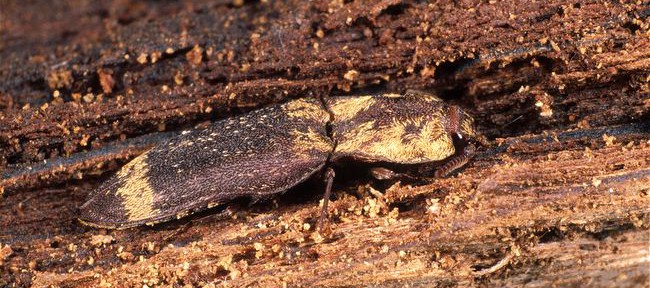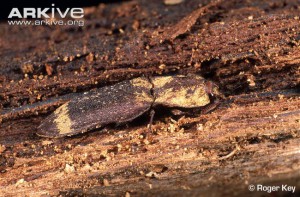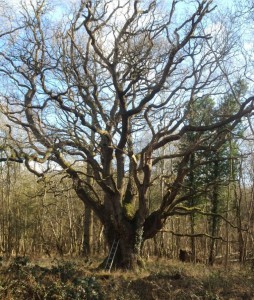
Hello everyone!
I’m Ceri, the TCV Natural Talent Saproxylic Insects Trainee based at Oxford University Museum of Natural History. Saproxylic insects depend on dead or dying wood for at least part of their lifecycle. For quite a few saproxylic insects, it is the larvae that develop inside the wood or under bark and once matured the adults feed on nectar from woodland plants such as hawthorn – one very important reason to have plenty of flowering plants in woodland rides. Some species, such as the click beetle Lacon quercus (see picture below) are very specialist. This beetle only develops in red rot in the trunk of really old oak trees. Other specialists might only inhabit the galleries made by another insect or only feed on a certain type of tree fungus. Of course, there are the generalists too that will happily lodge in a wide range of trees and situations.

The click beetle Lacon quercus, an oak specialist. Visit the factfile on ARKive.
Over the next year I will be putting together a saproxylic species list for Wytham Woods and deadwood beetles (Coleoptera) and flies (Diptera) will be the mainstay of this. Information will be gleaned from historical records found among the Museum Collections and Archives and this information will be added to records from my own survey work in the woods. An ecological project investigating the effect of habitat fragmentation on saproxylic species will run over the summer too. Community outreach and education events to highlight the importance of woodland biodiversity and ecology will also feature regularly with plenty of deadwood content! (these will be announced on Twitter – @Natural_Talent, so please follow us and check often).
So, where is Wytham Woods and why there? It’s a very special place that covers approximately 390ha just to the west of Oxford. Around a third is semi-natural Ancient Woodland, with the rest a mosaic of newer semi-natural forest and plantation, grassland and some areas of marsh habitat. It is a Special Site of Scientific Interest (SSSI) and has been one of the main research locations for the Oxford Universities for more than seventy years. Well studied you could say but there is still plenty to learn!
It is also rather fitting that one influential and ardent supporter of dead and decaying wood spent many an hour at Wytham. His name was Charles Sutherland Elton, an Oxford graduate of the 1920s that went on to undertake extensive zoological and ecological surveys in the woods that spanned decades. He developed the ecological niche theory, realting the place an animal holds in the environment to its food habits and natural enemies. He was also the first editor of Journal of Animal Ecology. In 1970, he was awarded the Darwin Medal by The Royal Society for his influential contribution to the study of animal ecology. To read a little more of his work, please click here. Elton’s diaries, documenting the observations from Wytham are kept at the Oxford Museum and what an honour it is to tread in those footsteps.
Lastly but certainly not least, I would like to say a HUGE thank you to the Esmée Fairbairn Foundation for funding this traineeship. It’s going to be a full-on, amazing year and I am very much looking forward to sharing it all with you.

